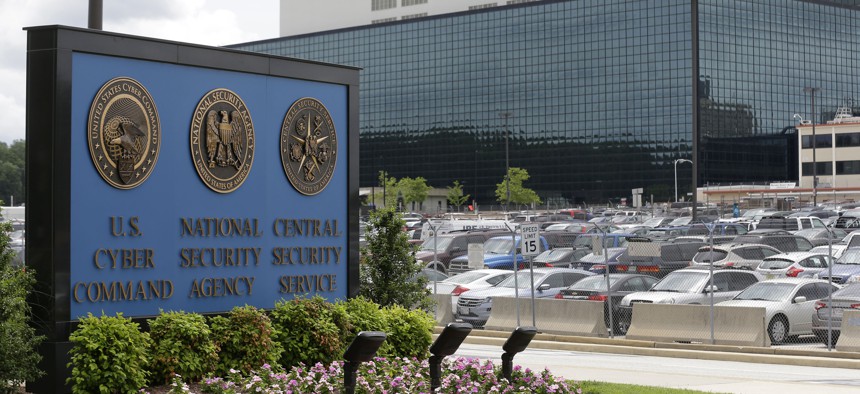
This June 6, 2013 file photo shows the National Security Administration (NSA) campus in Fort Meade, Md., where the US Cyber Command is located. Patrick Semansky/AP
CYBERCOM: We're Ready For War
Fort Meade says 133 Cyber Mission Force teams have reached initial operating capability, with full readiness two years away.
U.S. Cyber Command’s 133 Cyber Mission Force teams reached initial operating capability last week, the command said in a statement Monday.
The milestone comes six years after the new command launched and two years before it’s scheduled to reach full operating capability.
It also comes as the Pentagon and intelligence agencies are considering whether to recommend decoupling Cyber Command from the National Security Agency with which it currently shares a single leader and numerous resources. That idea faces opposition in Congress, including from Senate Armed Services Chairman Sen. John McCain, R-Ariz., and Sen. Deb Fischer, R-Neb., who chairs the Armed Services subcommittee that oversees cyber operations.
Initial operating capability means all cyber teams have reached “a threshold level of initial operating capacity and can execute their fundamental mission,” according to a Defense Department statement. CYBERCOM is currently staffed at 5,000 troops with a final goal of 6,200 troops, according to the DOD statement. Even full operating capability is often defined as less than 100 percent staffing because of the basic churn of troops in and out of units.
About half of Cyber Mission Force teams have already reached full operating capability, DOD said.
Read more: Will NSA and CyberCom Split?
See also Carter May Elevate CYBERCOM to a Full Combatant Command
“One of the reasons DOD has done exceptionally well to rapidly train and build this force is that each branch of the military services has come to the conclusion that cyber is a mission set that requires dedicated expertise over time,” CYBERCOM Chief Adm. Michael Rogers said in a statement. “That wasn’t always the case, and I have to compliment the services, the services’ cyber component leadership and the entire team for all of the extremely hard work to achieve this goal.”
CYBERCOM draws troops from all four military services with about 30 percent each coming from the Army, Navy and Air Force and 10 percent from the Marines. The group’s primary missions include defending DOD networks, defending combatant commands from cyberattacks and defending U.S. critical infrastructure and launching offensive cyber operations when directed by the president.




